L.GEN.2103 - Adding Sustainability traits to the MLA Resource Flock
To select more efficient and more sustainable sheep, breeding tools that consider feed intake and methane production against associated productivity traits (e.g. growth and body composition) are warranted.
| Project start date: | 09 November 2020 |
| Project end date: | 30 May 2025 |
| Publication date: | 29 October 2025 |
| Project status: | Completed |
| Livestock species: | Sheep |
| Relevant regions: | National |
|
Download Report
|
|
Summary
This study's focus was to measure the dynamics of feed intake and methane production traits in sheep under ad libitum feed conditions. By analysing feed intake, growth characteristics, methane production and genetic variability, the aim of the research is to provide preliminary data to Sheep Genetics for the development of breeding values and tools to assist producers in selecting for genetic improvement on this group of traits.
Objectives
The direct output of the project will be the data required to make quantitative estimates of genetic parameters for feed intake (RFI and FCE) in sheep including, heritability estimates, genetic correlations and Australian Sheep Breeding Values (ASBVs). These data will be made available to Sheep Genetics for calculation of genetic parameters that will then be made available to the sheep industry. Comparisons will also be made between feed intake and body composition to determine the differences between sheep that have low or high feed efficiency with the portion of data within phase one and again with later phases. This includes the following measurements on up to 1,500 lambs from the 2020 and 2021, 2022 and 2023 MLA Resource Flock (L.GEN.1814):
i. feed intake
ii. growth
iii. gas production (including CO2 and methane)
iv. body composition.
Submission of data to MLA via Sheep Genetics for the routine analysis and where relevant, development of residual feed intake, feed conversion efficiency, methane production ASBVs.
Key findings
• Average daily intake trait becomes stable in 15 days.
• Including part-record intake data improved the estimate of the average daily intake trait for weight and growth.
• A majority (>75%) of daily feed intake variation under ad libitum indoor feedlot conditions was attributable to weight and growth, while methane production and body composition had minimal additional influence.
• Sires across all major breed types can exhibit extremes in residual feed efficiency for weight and growth.
• Methane output is largely driven by roughage intake thus selecting for greater feed-use efficiency is likely to also reduce methane production.
Benefits to industry
This project provides significant progress in understanding feed intake efficiency and methane production in sheep, with more than 250 sires used across key breeds and 1,830 measurements taken in total across traits. The findings support that variation in daily feed intake is mostly attributable to weight and growth. Importantly, methane output is strongly linked to roughage intake, and integrating feed intake measurements with methane production offers a powerful dataset to develop breeding values and other genetic tools.
The development of robust facilities and protocols achieved by this project marks a pivotal step forward, and maintaining momentum in this research will empower the red meat industry to meet future production targets while reducing environmental impact.
MLA action
Work with industry partners to assist data being made available through appropriate channels, such as ASBVs through Sheep Genetics.
Future research
Future research should focus on further validating the reduced intake measurement period to ensure consistent and accurate estimation of feed intake traits across diverse conditions and genetically varied populations. While preliminary findings are promising, expanding the dataset with additional measurements will solidify confidence in these conclusions and enhance the reliability of breeding values and tools.
Industry investment in the extension of breeding tools and services to producers will ensure that sheep producers understand and adopt new breeding objectives that incorporate feed intake efficiency and methane production. This will enable the industry to translate research findings into tangible economic and environmental benefits, fostering sustainable progress in sheep finishing systems.
More information
| Project manager: | Sarah Butler |
| Contact email: | reports@mla.com.au |
| Primary researcher: | DPIRD WA |


